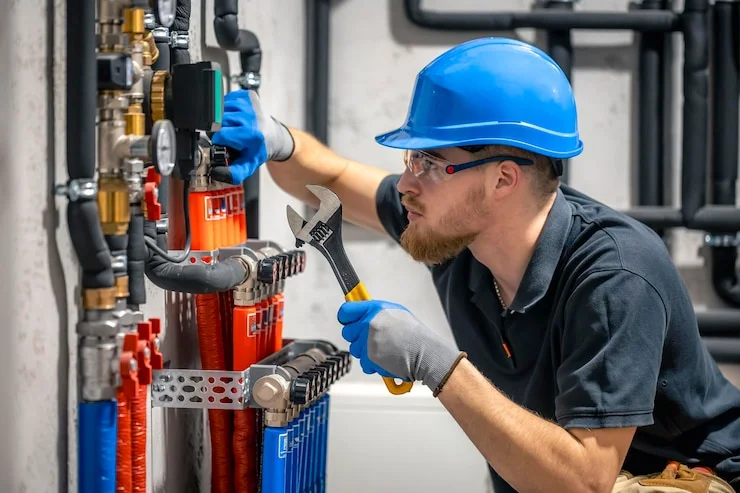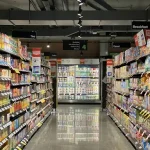Maintaining functional drainage systems is a critical component of modern infrastructure management. The efficiency with which drainage networks are cleaned and maintained can have significant implications for public health and safety, as well as for the environment. This article delves into how water jetting equipment is reshaping the landscape of drain maintenance, offering a highly effective solution to what can often be a challenging task.
The Challenge of Drain Maintenance
Drain maintenance can be a complex undertaking fraught with difficulties. The accumulation of grease, dirt, and other deposits within pipes can lead to blockages and even structural damage if not addressed promptly. Traditional methods of cleaning drains, such as mechanical rodding and the use of chemical cleaners, have their place but can be limited in their effectiveness and may pose environmental concerns.
One of the key challenges facing drain maintenance is navigating the intricate and often fragile network of pipes that make up domestic and commercial drainage systems. Another challenge is the necessity to remove blockages and build-up without damaging the pipes themselves, ensuring that infrastructure remains intact and functional after cleaning.
The Introduction of Water Jetting in Drainage Maintenance
As the demands of effective drain maintenance have evolved, so have the tools available to meet these challenges. Water jetting represents a significant step forward in this regard. This method employs high-pressure water streams to cut through debris and blockages, flushing them out of pipes and restoring optimal flow.
The technology behind water jetting is both simple and profound. By concentrating water pressure and directing it through a specialized nozzle, water jetting can achieve cleaning results unattainable by manual methods. Its ability to reach inaccessible areas and its adaptability to various pipe sizes and materials make it an indispensable tool in the contemporary drain maintenance arsenal.
The Advantages of Water Jetting over Conventional Techniques
When compared to traditional methods, water jetting offers a plethora of benefits. Its precision and power make it capable of dislodging even the toughest blockages, including tree roots, hardened scale, and concrete residue. Unlike chemical cleaners, water jetting avoids introducing potentially harmful substances into the environment.
Additionally, water jetting is less intrusive and more efficient. It can be conducted with minimal disruption to the surrounding area, which is especially advantageous in busy urban settings or within residential properties. The speed with which water jetting can be carried out also minimizes downtime, a critical factor in commercial and industrial operations where time is money.
Choosing the Right Water Jetting Equipment
Selecting the appropriate water jetting equipment is crucial for effective drain maintenance. The market offers a range of machines, each designed to handle different types of drainage systems and blockages. Factors such as water pressure, flow rate, hose length, and nozzle design must all be considered when choosing equipment suitable for specific maintenance needs.
It is also important to ensure that operators are properly trained in the use of water jetting machinery. The high pressures involved necessitate a thorough understanding of safety procedures to prevent accidents and damage to property.
Sustainability and Environmental Impact
The environmental aspect of drain maintenance cannot be overstated. With increasing scrutiny on the impact of industrial and commercial activities on ecosystems, water jetting provides a solution that is not only effective but also eco-friendly.
By relying solely on water and avoiding harsh chemicals, water jetting mitigates the risk of contaminating waterways and soil. Furthermore, the precision of water jetting means that water usage can be optimized, preventing wastage and supporting conservation efforts.
The Future of Water Jetting
As technology advances, so does the potential of water jetting in revolutionizing drain maintenance. Innovations in pump technology, nozzle design, and automation are continually enhancing the capabilities and efficiency of water jetting systems.
One promising development is the integration of smart technologies, which can offer real-time monitoring and control over the water jetting process. This can lead to even more targeted cleaning, reduced water usage, and the ability to promptly address maintenance issues before they escalate into costly repairs.
Case Studies and Success Stories
The effectiveness of water jetting is underscored by numerous case studies and success stories from around the globe. Municipalities, service contractors, and facility managers have documented significant improvements in the performance of their drainage systems following the adoption of water jetting practices.
In many situations, water jetting has not only cleared blockages that were considered intractable but has also extended the lifespan of the pipe systems being maintained. The reduction of emergency call-outs and the ability to conduct preventative maintenance are just some of the additional benefits that water jetting brings to the table.
Conclusion: Embracing Water Jetting in Drain Maintenance Strategies
In conclusion, the power of water jetting in revolutionizing drain maintenance is undeniable. Its efficacy, safety, and environmental sustainability make it an optimal choice for tackling the wide array of challenges presented by modern drainage systems. As the demand for more effective maintenance solutions grows, embracing water jetting is not just a strategic decision, but a necessity for a future where infrastructure reliability and environmental stewardship go hand in hand.
For those looking to invest in reliable and effective solutions for their drain maintenance needs, exploring the range of water jetting equipment available on the market is an invaluable step towards a cleaner, greener, and more efficient future in drainage management.







